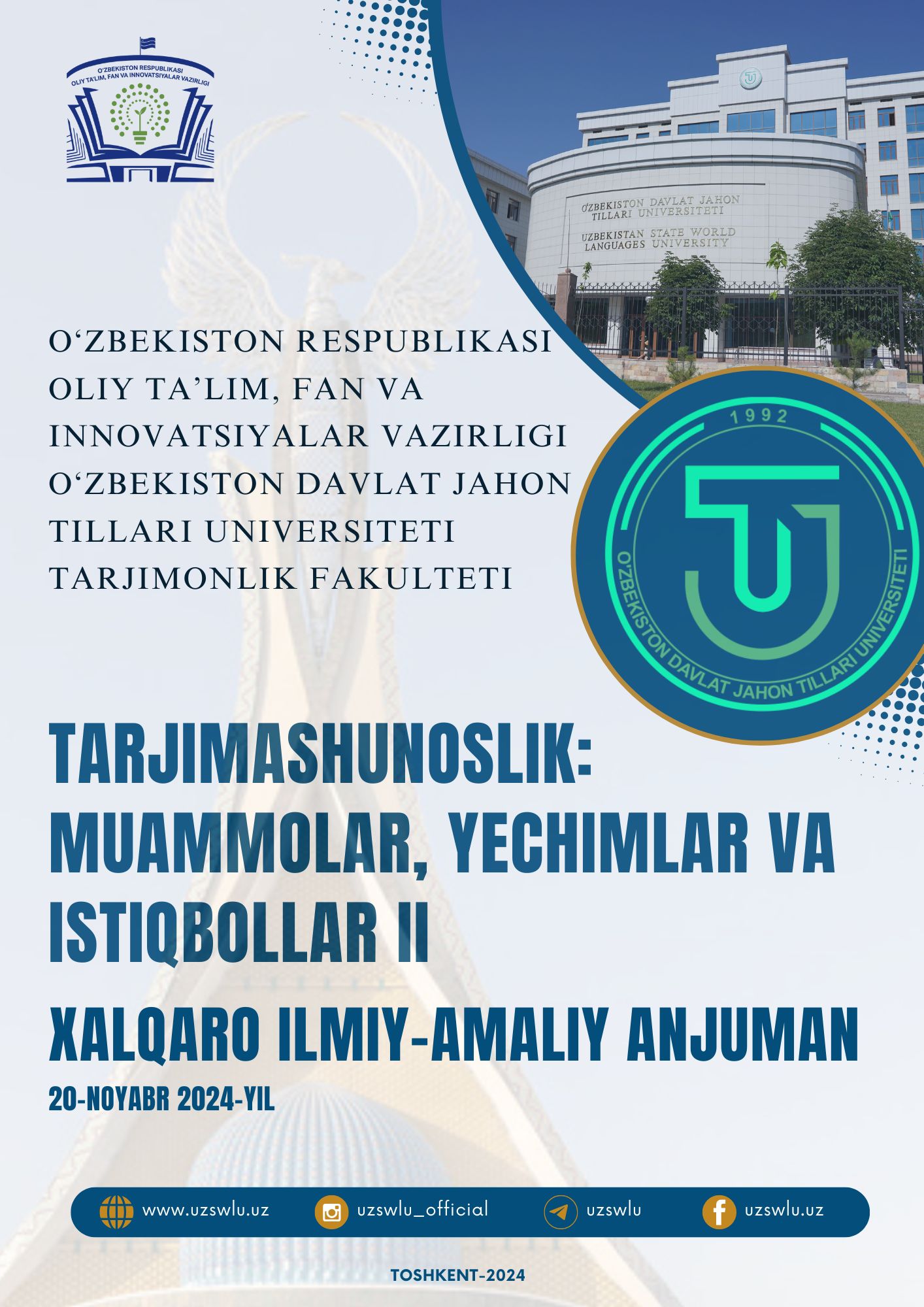LINGUISTIC CHARACTERISTICS OF CHILDREN'S GAMES IN ENGLISH AND UZBEK LANGUAGES
Kalit so‘zlar
Children's games, linguistic characteristics, culture, language acquisition, phonetic patterns, Uzbek language, English language, grammar structure.Annotasiya
This article examines the linguistic characteristics of children's games in English and Uzbek languages. Children's games play a significant role in language acquisition, often reflecting the language structures and cultural values inherent to each society. The article analyzes vocabulary, phonetic and rhythmic patterns, grammar structures, and language learning processes present in English and Uzbek games. It demonstrates how language and culture are transmitted through children's play, as well as how games help young generations familiarize themselves with cultural and social norms.
Foydalanilgan adabiyotlar ro‘yhati
Oxunjon Safarov. O'zbek xalq bolalar o’yinlari. -T.: Sharq, 2013.-[176].
Iona Archibald Opie, Peter Opie. Children’s games in street and playground: Chasing, catching, seeking, hunting, racing, duelling, exerting daring, guessing, acting, pretending. Oxford university press, 1984. Family and relationships-[371 pages.]
Iona Archibald Opie, Peter Opie. The Lore and Language of Schoolchildren, Oxford university press, 1959.
M.I. Rasulova, Z.I. Shukurova. Comparative typology of Uzbek, English and Russian languages
T. Usmonxo’jayev, F. Xo’jayev. 1001 o’yin. -Toshkent
Telia V.N. Linguoculturology - the key to the new reality of the phenomenon of reproducibility of several-word formations // Language. Culture. Communication: Collection of scientific papers in honor of S.G. Ter-Minasova. – M. Gnosis, 2008.

